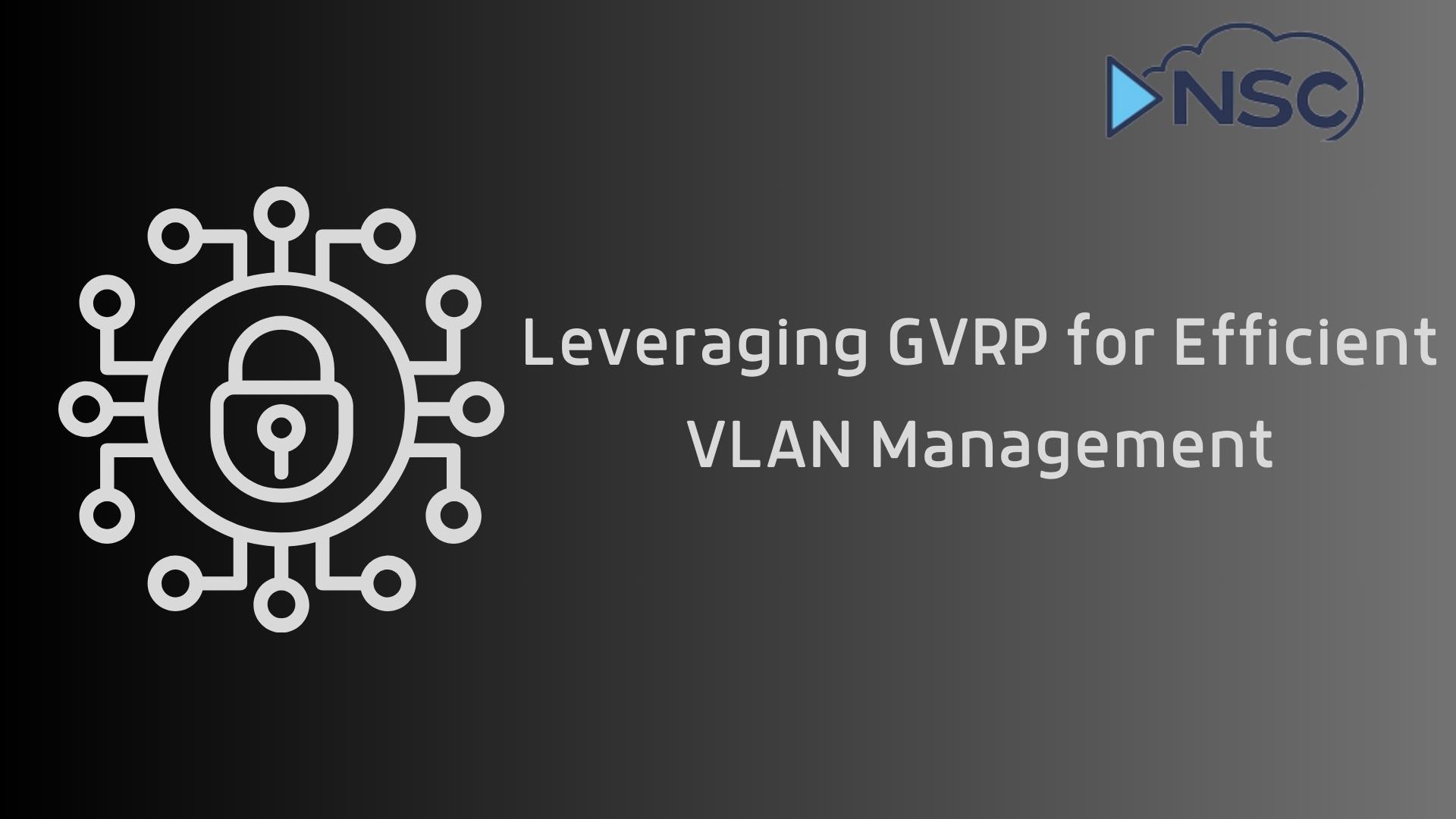Managing VLANs efficiently in dynamic networks is a complex task that demands robust solutions. GARP VLAN Registration Protocol (GVRP) provides such a solution by automating VLAN membership management across networks.
By leveraging GVRP, network administrators can ensure consistent VLAN configurations and reduce manual setup errors, enhancing network efficiency and scalability.
This blog explores GVRP's functionality, its integration into network infrastructures, and its advantages over traditional VLAN management methods.
Understanding GVRP and Its Benefits
What is GVRP? GARP VLAN Registration Protocol (GVRP) is a network protocol that simplifies the management of VLAN memberships by automating the process. Based on the Generic Attribute Registration Protocol (GARP), GVRP allows for dynamic distribution and management of VLAN information across switches within a network. This automation helps maintain consistency in VLAN configurations across multiple devices without requiring manual input.
How GVRP Works GVRP operates by exchanging VLAN information in the form of GARP messages between network devices. When a device is connected to a GVRP-enabled switch, it can automatically send a request to join specific VLANs. The switch then propagates this information, ensuring all participating switches update their configurations accordingly. This mechanism significantly reduces configuration errors and simplifies network management.
Benefits of Using GVRP The primary advantage of using GVRP is its ability to manage VLAN configurations dynamically, which is crucial for maintaining network efficiency in large and complex environments. By automating VLAN registration and deregistration, GVRP reduces the workload on network administrators and minimizes human errors. Additionally, it ensures that all network segments are consistently configured, enhancing overall network performance and security.
Implementing GVRP in Network Design
Implementing GVRP effectively can enhance VLAN management across your network. Here's how you can integrate GVRP into your network design, leveraging best practices and specific configurations:
Configuring GVRP on Switches To enable GVRP on your switches, you'll need to access the switch's configuration settings. Here are the general steps:
- Enable GVRP Globally: Begin by enabling GVRP on the switch to allow it to participate in VLAN registrations dynamically.
- Configure GVRP on Specific Ports: Choose which ports on the switch will have GVRP enabled. This setting determines where VLAN information can be dynamically registered and propagated.
- Set GVRP Modes: Depending on your network needs, set the appropriate GVRP mode for each port. Modes such as 'Normal', 'Fixed', and 'Forbidden' control how VLANs are managed on each port.
Best Practices for GVRP Configuration
- Consistency Across Devices: Ensure that GVRP is configured consistently across all devices in the network to avoid conflicts and ensure seamless VLAN distribution.
- Security Considerations: Be mindful of the security implications of dynamic VLAN assignments. Properly secure the GVRP configuration to prevent unauthorized access or disruptions.
- Monitoring and Maintenance: Regularly monitor the GVRP status and performance on your switches. Check for any anomalies and adjust configurations as needed to maintain network efficiency and security.
For more detailed guidance on implementing Layer 2 network designs, which include the use of protocols like GVRP, you can refer to course on general Layer 2 network design available on our website: General Layer 2 Network Design Course.

Case Studies and Real-World Applications of GVRP
Implementing GVRP can transform how VLANs are managed across various network environments. Let's explore some real-world applications and case studies that demonstrate the effectiveness of GVRP:
Example Configuration in a Distributed Network Consider a network with multiple branches, each having its own set of switches. By enabling GVRP on all switches and configuring them to dynamically manage VLANs, the network can automatically adjust as devices are added or removed, ensuring optimal performance and security across all locations. This dynamic management helps maintain consistent VLAN configurations, reducing the administrative burden and potential for errors.
Comparative Analysis with VTP While Cisco's VLAN Trunking Protocol (VTP) serves a similar purpose by managing VLAN configurations across a Cisco-dominated environment, GVRP offers a more flexible, vendor-neutral solution. Unlike VTP, which is proprietary to Cisco, GVRP works across all IEEE 802.1Q compliant devices, making it ideal for multi-vendor environments. This interoperability is particularly beneficial in complex network settings where different brands of network equipment are used.
Benefit Highlight: Network Scalability and Flexibility A notable case involves a university's campus network, which utilized GVRP to handle frequent changes in network configurations as different departments added or moved resources. GVRP facilitated seamless transitions without requiring manual reconfiguration, demonstrating its scalability and flexibility in a dynamic academic environment.
Summary
GVRP stands out as a powerful tool for managing VLANs in diverse and evolving network environments.
Its ability to automate VLAN configurations not only saves time and reduces errors but also enhances network security and performance.
By integrating GVRP, organizations can achieve more resilient and adaptable network infrastructures, ready to meet the demands of modern digital landscapes.


